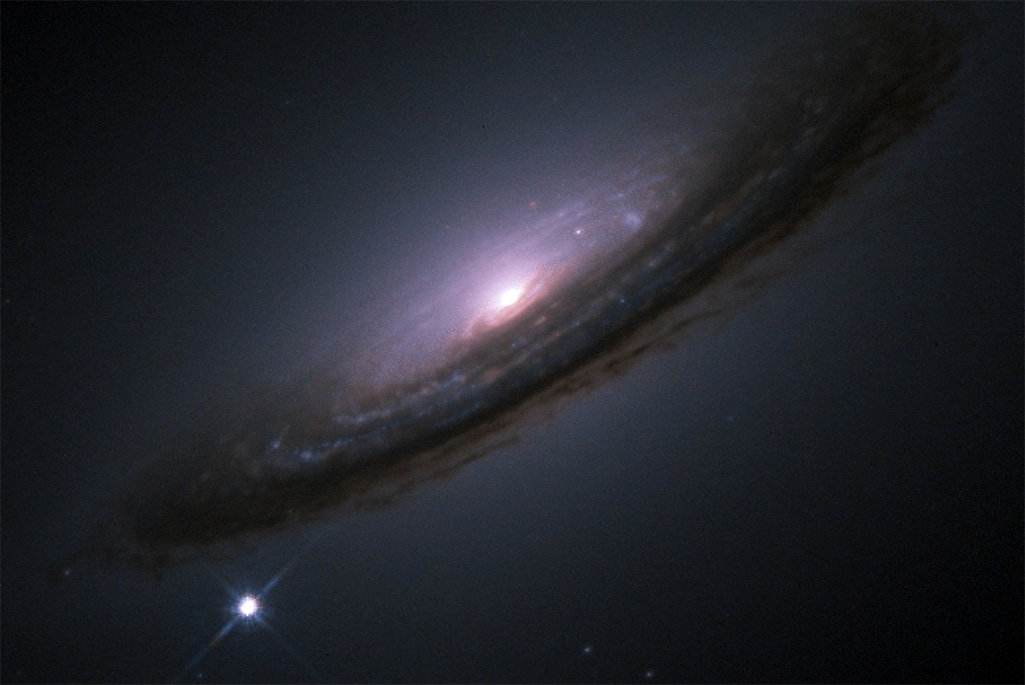Scientists reanalyzed the supernovae with a sophisticated statistical method (a “Bayesian Hierarchical Model”) that can better account for uncertainties, incorporating partial information and the probability of errors. It makes it possible to include factors the researchers might not know exactly, but with constraints on how well they do know them. For example, the new approach can take into account that the filters in a telescope might drift over time, changing the amount of light that gets through from a supernova. This kind of flexibility improves the accuracy of the analysis and was difficult to include in previous techniques.
The improved analysis approach will be used to incorporate additional supernovae. Over the next year, researchers plan to add three more datasets, one with low-redshift (nearer by) supernovae, and two with high-redshift supernovae that look further back in time.
“We wanted to set a baseline before we bring in several hundred new low-redshift supernovae, which is one of the areas where the calibration is most crucial and where we have some of the weakest datasets in the results so far,” said Greg Aldering, a co-author of the paper and physicist at Berkeley Lab who led the Nearby Supernova Factory project. “We think we really understand the calibration in a way no one has before, and we’re excited to add more supernovae and see what they can tell us about dark energy.”
The new analysis framework will also help incorporate the tens to hundreds of thousands of additional supernovae expected from the NSF/DOE’s Vera C. Rubin Observatory (which recently released its first images) and NASA’s Nancy Grace Roman Space Telescope over the coming decade.
To paint a more complete picture of how our universe works, researchers can then combine their findings with those from complementary studies of dark energy that use different approaches. The other current leading technique to investigate how dark energy varies over time is by measuring how galaxies cluster — a characteristic feature known as baryon acoustic oscillations, or BAO. This is the measurement that DESI performs.
“BAO can look further back in time to when dark energy played less of a role in the universe, and supernovae are particularly precise in the more recent universe,” Perlmutter said. “The two techniques are getting good enough that we can really start saying things about the dark energy models. We’ve been waiting to reach this point for a long time.”
The joint result from supernovae and BAO used together is also a striking example of the successful focus that a national laboratory can bring to a scientific field. Berkeley Lab supported the Supernova Cosmology Project’s decade-long work leading to the discovery of the universe’s acceleration, as well as its subsequent supernova studies of the dark energy models that might explain it. The lab also initiated and leads the 70-institution DESI collaboration to address the same question with the BAO technique, and led a complementary series of cosmic microwave background (CMB) projects that provide crucial early universe measurements for these dark energy studies.
Researchers in neighboring offices on the same hallway thus helped each other understand the strengths and weaknesses of the two time-varying dark energy approaches, supernovae and BAO, as they were brought together with the CMB to obtain joint results. The projects also have inspired each other’s research agendas, helping build these ambitious, world-leading projects that use some of the largest telescopes on the ground and in space.
This research was conducted with collaboration from Berkeley Lab, UC Berkeley, University of Hawai’i at Mānoa, France’s Laboratory of Nuclear and High-Energy Physics (LPNHE, CNRS/IN2P3), Space Telescope Science Institute, University of San Francisco, the Australian National University, Spain’s Institute of Fundamental Physics (IFF-CSIC), the Institute of Cosmos Sciences (UB-IEEC), and Florida State University. Computing support was provided by the University of Hawai’i’s high performance computing cluster, Koa.
###
Lawrence Berkeley National Laboratory (Berkeley Lab) is committed to groundbreaking research focused on discovery science and solutions for abundant and reliable energy supplies. The lab’s expertise spans materials, chemistry, physics, biology, earth and environmental science, mathematics, and computing. Researchers from around the world rely on the lab’s world-class scientific facilities for their own pioneering research. Founded in 1931 on the belief that the biggest problems are best addressed by teams, Berkeley Lab and its scientists have been recognized with 16 Nobel Prizes. Berkeley Lab is a multiprogram national laboratory managed by the University of California for the U.S. Department of Energy’s Office of Science.
DOE’s Office of Science is the single largest supporter of basic research in the physical sciences in the United States, and is working to address some of the most pressing challenges of our time. For more information, please visit energy.gov/science.
